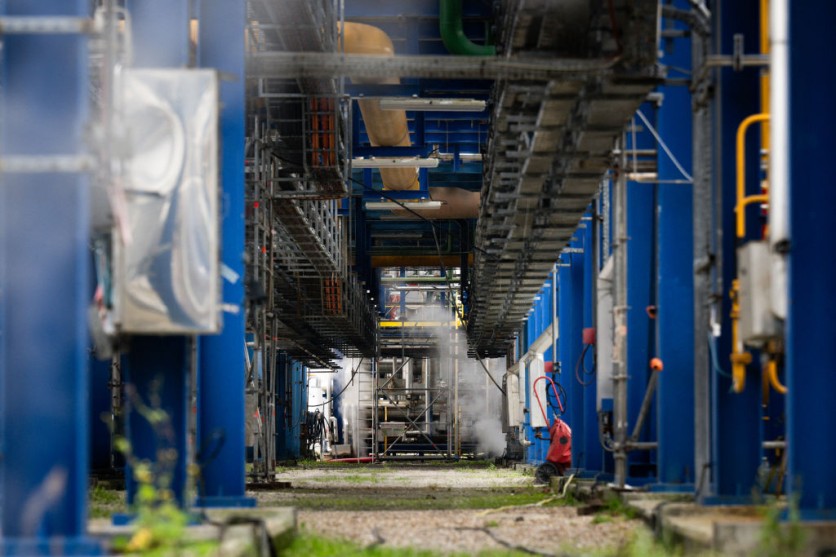Pioneering a breakthrough in water purification, researchers have developed a material capable of efficiently extracting urea from polluted water. This not only addresses water pollution but also presents a promising avenue for the conversion of urea into environmentally friendly hydrogen fuel.

CORRECTION / This photograph taken on December 18, 2023 shows a general view of the "Air Liquide" hydrogen plant in Port-Jerome, north-western France, on December 18, 2023.
Transforming Polluted Water into Fuel
Researchers at Worcester Polytechnic Institute (WPI) have propelled us closer to this vision by introducing a groundbreaking material designed to eliminate urea from water, offering the potential for its conversion into hydrogen gas.
Conducted under the leadership of Xiaowei Teng, the James H. Manning professor of Chemical Engineering at WPI, Interesting Engineering reported that the study reveals a promising solution to a persistent challenge in urea electrolysis.
Urea, a common nitrogen-rich agricultural fertilizer and a byproduct of human metabolism presents environmental concerns when found in excessive quantities in water.
Runoff from agriculture and wastewater discharge, rich in urea, contribute to detrimental issues such as harmful algal blooms and hypoxic dead zones, negatively impacting aquatic ecosystems and human well-being.
Nevertheless, the distinctive characteristics of urea, including its non-toxic nature, high water solubility, and substantial hydrogen content, position it as a potential candidate for hydrogen storage and production.
Development of Cost-Effective, Highly Efficient Electrocatalysts
Addressing a historic challenge in the efficient use of urea for hydrogen production, EurekAlert reported that the research team at WPI focused on the development of cost-effective and highly efficient electrocatalysts.
These electrocatalysts were designed to selectively oxidize urea instead of water, marking a crucial advancement in the field. The team introduced electrocatalysts composed of synergistically interacted nickel and cobalt atoms with unique electronic structures.
Their investigation concentrated on homogeneous nickel and cobalt oxides and hydroxides, unveiling that tailoring distinct electronic structures with dominant Ni2+ and Co3+ species played a vital role in enhancing electrochemical activity and selectivity for urea oxidation.
Explaining the significance of their findings, Teng highlighted that achieving the right electronic configuration was pivotal to improving the selectivity of urea oxidation.
The team observed that while a higher nickel valence, such as Ni3+, contributed to a rapid reaction with a robust electric current output, a significant portion of the current originated from unwanted water oxidation, emphasizing the importance of a tailored electronic structure for optimal results.
Professor Aaron Deskins at WPI conducted computational simulations that complemented the experimental discoveries.
These simulations revealed that the homogeneous blending of nickel and cobalt oxides and hydroxides played a crucial role in redistributing electrons, optimizing the catalysts for effective bonding with urea and water molecules.
The implications of this groundbreaking research are extensive. Urea, a significant nitrogen fertilizer and feed additive produced on a large scale for decades, reaching approximately 180 million metric tons in 2021 alone, stands to undergo a transformative shift.
As per Phys, the team's findings have the potential to revolutionize the utilization of urea, not only by efficiently producing hydrogen fuel from waste streams but also by contributing to the long-term sustainability of ecological systems.
The research, titled "Enhanced Urea Oxidation Electrocatalytic Activity by Synergistic Cobalt and Nickel Mixed Oxides," introduces new avenues for the water-energy relationship, offering an environmentally friendly approach to both water treatment and hydrogen production.
Related Article : Coastal Water Pollution Transfers to Air, Research Says





